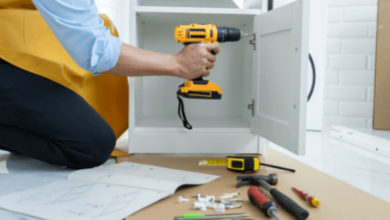How can athletes with disabilities participate in equestrian competitions?

Introduction
Equestrian competitions have long been a symbol of elegance, skill, and partnership between rider and horse. While these events traditionally spotlight able-bodied athletes, the world of para-equestrian sports has opened the door for athletes with disabilities. This comprehensive guide will explore the opportunities, challenges, and triumphs of disabled athletes in equestrian competitions, detailing how they can participate, the support they receive, and the inspiring stories of those who have excelled in this field.
Understanding Para-Equestrian Sports
Para-equestrian sports are adapted forms of equestrian competitions designed for athletes with disabilities. These events follow similar rules to traditional equestrian sports but include modifications to accommodate various physical and cognitive challenges. The primary goal is to provide an inclusive platform where athletes can showcase their talents and compete at various levels, from local competitions to the Paralympic Games.
Classification Systems in Para-Equestrian Sports
To ensure fair competition, para-equestrian sports use a classification system that groups athletes based on their functional abilities. This system, developed by the International Paralympic Committee (IPC) and the International Equestrian Federation (FEI), categorizes riders into grades. These grades reflect the severity of their disabilities and determine the level of support and modifications needed during competitions.
Grade I: For athletes with the most significant impairments, requiring assistance with mounting and dismounting. Grade II: For athletes with moderate impairments, often needing some support for balance and stability. Grade III: For athletes with mild impairments affecting mobility and coordination. Grade IV: For athletes with minimal impairments, competing in a manner similar to able-bodied riders but with specific adaptations. Grade V: For athletes with the least severe impairments, allowing for near-normal participation with minimal adaptations.
Adapting Equipment and Tack
One of the key aspects of enabling athletes with disabilities to participate in equestrian sports is the adaptation of equipment and tack. This can include modified saddles, reins, stirrups, and mounting ramps. These adaptations are tailored to each rider’s needs, ensuring they can maintain proper balance, control, and communication with their horse.
Training and Support Programs
Athletes with disabilities often require specialized training programs that focus on their unique needs and abilities. These programs are provided by certified trainers and organizations dedicated to para-equestrian sports. Additionally, support programs offer resources such as financial aid, grants, and sponsorship opportunities to help athletes pursue their passion.
Inclusion and Advocacy in Equestrian Sports
The inclusion of athletes with disabilities in equestrian competitions is supported by numerous advocacy organizations. These groups work to raise awareness, promote accessibility, and ensure that competitions are inclusive and fair. Examples include the Paralympic Equestrian Committee, Riding for the Disabled Association (RDA), and various national and international governing bodies.
Success Stories and Inspirational Figures
Many athletes with disabilities have achieved remarkable success in equestrian competitions. Their stories serve as inspiration and proof that with determination, support, and the right adaptations, anything is possible. Notable figures include:
Lee Pearson: A British para-equestrian who has won multiple gold medals at the Paralympic Games. Bert Sheffield: A Canadian rider known for her achievements in dressage and her advocacy for disabled athletes. Natasha Baker: A British para-dressage rider who has won numerous Paralympic and World Championship medals.
The Role of Horses in Para-Equestrian Sports
Horses play a crucial role in the success of para-equestrian athletes. They are carefully selected and trained to work with riders with disabilities, ensuring safety, trust, and effective communication. The bond between horse and rider is paramount, as it fosters confidence and enhances performance.
Challenges and Overcoming Obstacles
While the world of para-equestrian sports is growing, athletes still face challenges such as funding, access to facilities, and societal perceptions. Overcoming these obstacles requires continued advocacy, investment in resources, and a collective effort to promote inclusivity in all levels of equestrian sports.
Future Prospects for Para-Equestrian Sports
The future of para-equestrian sports looks promising, with increasing awareness, improved classification systems, and greater support for athletes. As more individuals and organizations recognize the importance of inclusivity, the opportunities for athletes with disabilities to participate in and excel at equestrian competitions will continue to expand.
FAQs
How are para-equestrian athletes classified for competitions? Para-equestrian athletes are classified based on their functional abilities using a system developed by the International Paralympic Committee and the International Equestrian Federation. This system categorizes athletes into grades I to V, reflecting the severity of their disabilities.
What adaptations are made for athletes with disabilities in equestrian sports? Adaptations can include modified saddles, reins, stirrups, and mounting ramps. These modifications are tailored to each athlete’s needs to ensure they can maintain balance, control, and communication with their horse.
What types of disabilities are eligible for para-equestrian sports? Para-equestrian sports are open to athletes with a wide range of physical and cognitive disabilities, including mobility impairments, visual impairments, and neurological conditions.
Are there specific training programs for para-equestrian athletes? Yes, there are specialized training programs designed to address the unique needs of para-equestrian athletes. These programs are provided by certified trainers and organizations dedicated to supporting athletes with disabilities.
How can athletes with disabilities find support for participating in equestrian competitions? Athletes can find support through advocacy organizations, financial aid programs, grants, and sponsorship opportunities. Organizations like the Riding for the Disabled Association and national para-equestrian committees offer valuable resources and assistance.
What is the role of horses in para-equestrian sports? Horses are carefully selected and trained to work with riders with disabilities. The bond between horse and rider is crucial for safety, trust, and effective communication, enhancing the athlete’s performance and confidence.
Conclusion
Para-equestrian sports represent a powerful avenue for athletes with disabilities to showcase their skills, determination, and passion for equestrianism. Through adaptive equipment, specialized training, and unwavering support, these athletes break barriers and inspire others. The future holds great promise for continued growth and inclusivity in para-equestrian sports, making it possible for more individuals to participate in and excel at equestrian competitions.





